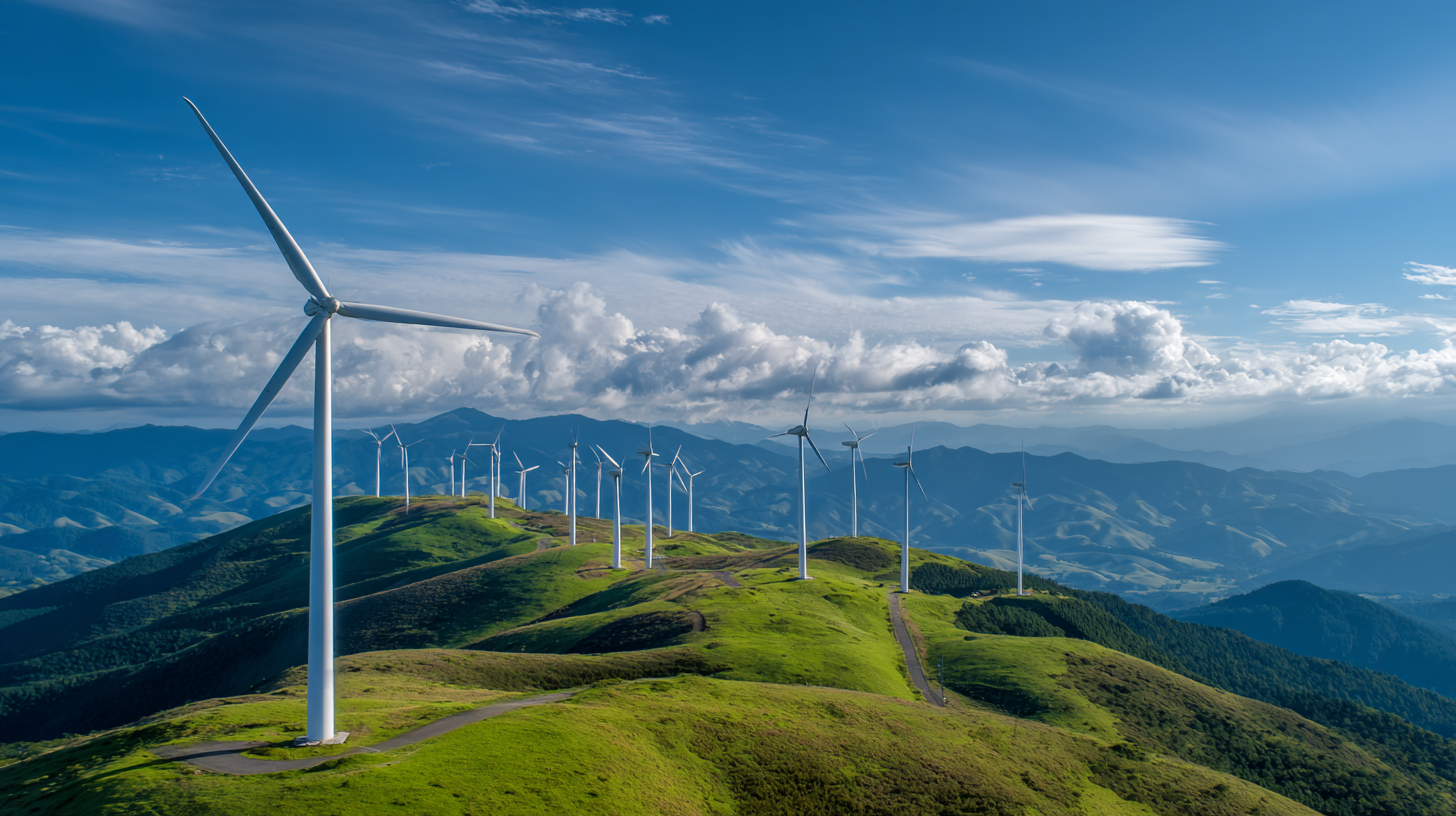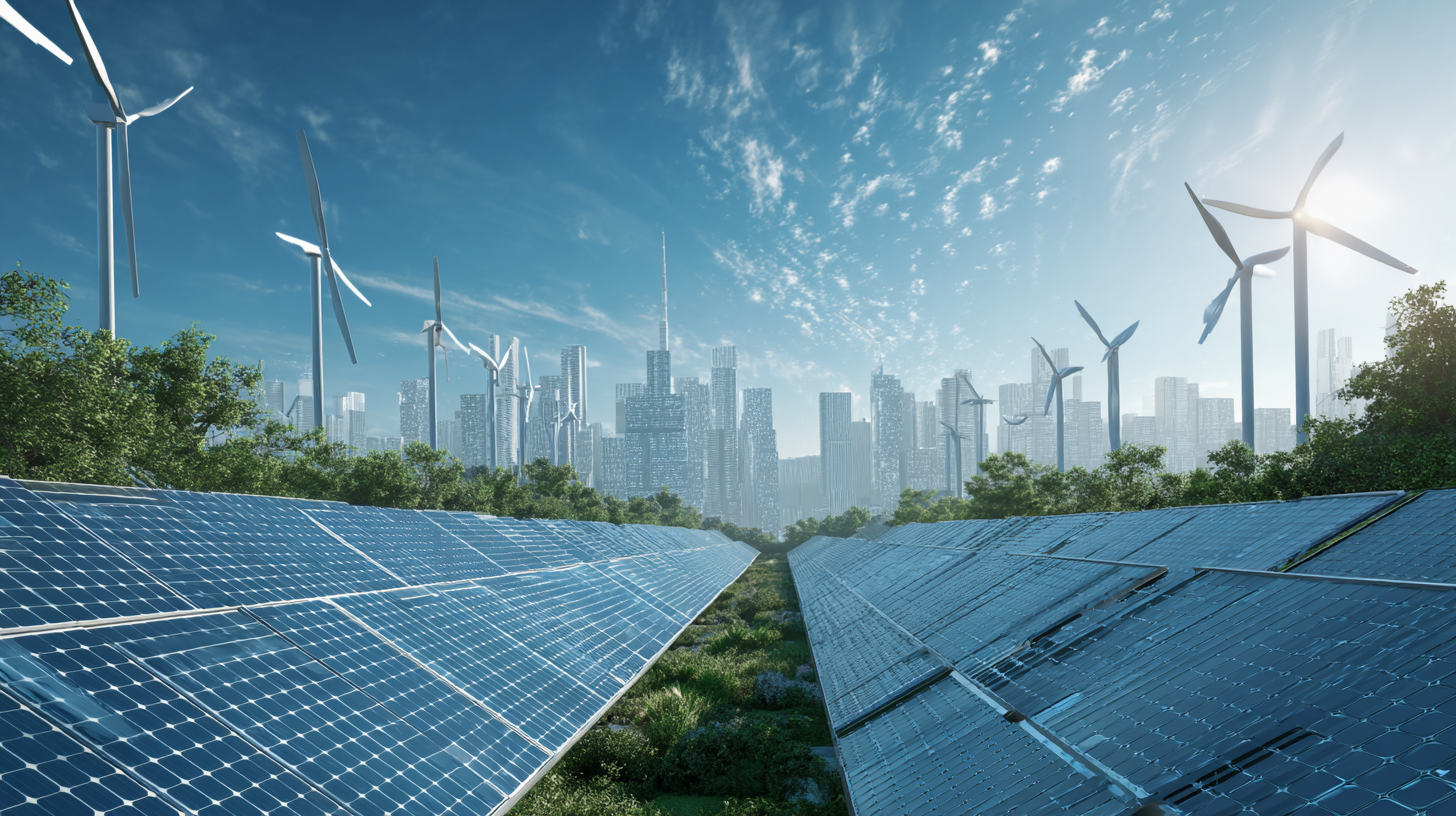Exploring the Unique Features and Applications of the Best Sustainable Energy Products in Today's Market
In an era where climate change poses a significant threat to our planet, the shift towards Sustainable Energy has never been more critical. According to a report by the International Energy Agency (IEA), global renewable electricity generation rose by 29% in 2020, signifying a transformational shift in energy consumption patterns. This surge indicates not only an increasing public demand for cleaner energy sources but also an evolution in technologies and products that facilitate this transition. The importance of Sustainable Energy products cannot be overstated, as they play a vital role in reducing carbon emissions and promoting energy efficiency.

This ultimate guide explores the unique features and diverse applications of the best Sustainable Energy products available today, helping consumers make informed choices that align with their ecological values and contribute to a sustainable future.
Key Challenges in Adopting Sustainable Energy Technologies
As the demand for sustainable energy technologies continues to rise, several key challenges hinder their widespread adoption. One major obstacle is the initial cost of investment. Many sustainable energy products, such as solar panels and wind turbines, require a significant upfront expenditure, which can be a deterrent for both individuals and businesses. To mitigate this issue, potential users should explore financing options such as green loans or government incentives that can ease the financial burden, making sustainable energy solutions more accessible.
Another challenge is the lack of awareness and understanding of sustainable energy technologies among the general public. Many consumers remain skeptical about the efficiency and reliability of these products. Increasing education and transparent communication about the benefits and real-world performance of sustainable technologies can help bridge this knowledge gap. To encourage adoption, stakeholders should consider organizing workshops or webinars that showcase successful implementations of sustainable energy solutions.
Moreover, regulatory barriers can impede the integration of sustainable energy into existing infrastructures. These barriers often stem from outdated policies that prioritize conventional energy sources over renewables. Advocating for updated regulations that support sustainable energy initiatives is essential. Communities can participate in local energy forums or reach out to policymakers to push for changes that recognize and facilitate the use of sustainable technologies in everyday life.
Evaluating Performance: The Limitations of Current Sustainable Energy Products
The evaluation of sustainable energy products today reveals not only their potential but also the limitations that hinder their widespread adoption. For instance, while hydrogen production technologies serve as a promising solution for energy storage, a detailed life cycle analysis indicates significant challenges in manufacturing and operational costs that could deter investment in such solutions. Furthermore, the transition towards renewable energy systems integrated into building designs, particularly in zero-energy buildings, faces hurdles related to scalability and performance metrics that are yet to be fully optimized.

Additionally, advancements in sustainable building materials have shown great promise; however, the application of appropriate sustainability key performance indicators (KPIs) is crucial for measuring their effectiveness and long-term viability. The disruption caused by rapid industrialization has also led to an increased emphasis on waste-to-energy technologies, raising questions about the social perspectives that affect their acceptance and implementation. As the market continues to evolve, addressing these limitations will be key in enhancing the performance and adoption of sustainable energy solutions across various sectors.
Cost vs. Benefit: Financial Barriers to Sustainable Energy Alternatives
The transition to sustainable energy alternatives is increasingly critical; however, financial barriers remain a significant challenge for consumers and businesses alike. According to a report from the International Renewable Energy Agency (IRENA), the initial investment in renewable technologies can deter up to 50% of potential adopters. While the long-term savings on energy bills and the environmental benefits are compelling, the upfront costs of solar panels and wind turbines can be daunting, often requiring financial incentives to make them accessible.

Moreover, a recent study by the U.S. Department of Energy (DOE) found that while the cost of solar installations has dropped by over 90% since 2010, financing options still present hurdles. Many consumers are unaware of available rebates or financing plans that could alleviate their upfront financial burden. Addressing these barriers through education and improved financial products is essential to accelerate the adoption of sustainable energy technologies and tap into their full potential for carbon reduction and energy independence.
Consumer Awareness: Misconceptions About Sustainable Energy Solutions
Sustainable energy solutions often face a myriad of misconceptions that may hinder their adoption. A 2022 report by the International Energy Agency (IEA) revealed that despite a growing awareness of renewable energy sources, about 54% of consumers believe that sustainable energy is more expensive than traditional energy. In reality, the cost of solar and wind energy has decreased by over 80% since 2010, making them increasingly competitive. Such misconceptions can prevent consumers from embracing technologies that may ultimately save them money and contribute positively to the environment.
**Tip:** To better understand the benefits of sustainable energy, consider investing time in researching local incentives for solar installations. Many governments offer tax credits and rebates that can significantly lower the upfront costs.
Moreover, there's a common belief that sustainable energy systems are less reliable than conventional sources. The National Renewable Energy Laboratory (NREL) indicates that advancements in energy storage technologies have dramatically improved the potential for renewable energy systems to provide consistent power. With energy storage options like lithium-ion batteries becoming more affordable and efficient, transitioning to sustainable energy does not compromise reliability.
**Tip:** Try to engage with local energy cooperatives or attend workshops to gain firsthand knowledge about the reliability of sustainable energy systems. This engagement can help dispel myths and foster a greater appreciation for emerging green technologies.
Exploring the Unique Features and Applications of the Best Sustainable Energy Products in Today's Market - Consumer Awareness: Misconceptions About Sustainable Energy Solutions
| Product Type | Key Features | Applications | Consumer Misconceptions | Impact on Environment |
|---|---|---|---|---|
| Solar Panels | High efficiency, low maintenance | Residential and commercial electricity generation | They are too expensive to install | Reduces carbon footprint significantly |
| Wind Turbines | Renewable energy source, quiet operation | Utility-scale energy production | They harm wildlife | Provides clean energy generation |
| Geothermal Heat Pumps | High efficiency, suitable for heating and cooling | Heating and cooling buildings | Only suitable for certain regions | Uses earth's stable temperature to reduce energy consumption |
| Battery Storage Systems | Scalable, integrates with renewable sources | Home and grid energy storage | They are not reliable for long-term use | Enhances energy independence and reliability |
| Biomass Energy Systems | Utilizes organic materials, carbon-neutral | Biofuel production, heating | Contribution to deforestation | Promotes waste reduction and energy recovery |
Regulatory Hurdles: Navigating Policies for Sustainable Energy Adoption
Regulatory hurdles remain a significant barrier to the widespread adoption of sustainable energy solutions. As the urgency to transition to renewable energy sources grows, it becomes increasingly crucial for governments to streamline policies that currently impede private sector involvement. In the United States, for example, calls are mounting for the removal of these regulatory bottlenecks, allowing innovators to spearhead clean energy projects that can expand the sector efficiently. Such reforms could catalyze investment in renewable technologies, driving down costs and enhancing accessibility for consumers.
In regions like the Global South, the challenge is particularly complex. Achieving sustainable energy adoption in these areas requires a delicate balance among economic capabilities, social readiness, and regulatory frameworks. Effective policies can facilitate the transition, but they must be tailored to local contexts, reflecting both the unique needs of communities and the aspirations for a sustainable future. For nations like Malaysia, examining existing legislation and government initiatives reveals both the potential and obstacles in their path toward net-zero goals. Addressing these regulatory challenges is essential to unleash the full potential of clean energy adoption across diverse markets and sectors.
